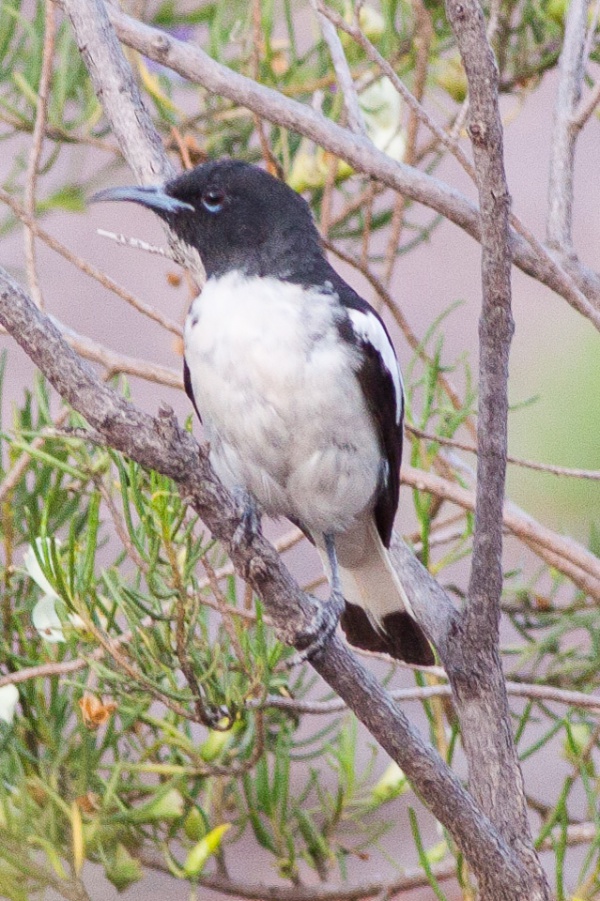Facts About Pied honeyeater
The pied honeyeater, also known as the black and white honeyeater or western pied honeyeater, is a distinctive bird endemic to Australia. It is the sole species in the genus Certhionyx and belongs to the honeyeater family, Meliphagidae. In New South Wales, this bird is listed as vulnerable under the Threatened Species Conservation Act of 1995.
Initially, the pied honeyeater was classified with other honeyeaters, but subsequent DNA analysis justified its classification into its own genus. These birds are easily recognizable by their striking black and white plumage. Males are particularly notable for having a semicircular patch of bare skin beneath their eyes. They are mid-sized, weighing approximately 27 grams and measuring between 15 to 20 cm in length.
Pied honeyeaters are predominantly found in the central and western regions of Australia, with a notable presence in New South Wales and South Australia. They exhibit erratic movement patterns, especially after substantial rainfall following periods of drought. Their preferred habitats include arid and semi-arid zones, sandhills, woodlands, and coastal regions.
Behavior-wise, pied honeyeaters are rather elusive and are typically observed in pairs or small groups. Their diet primarily consists of nectar, but they also consume insects, fruits, and seeds. The breeding season spans from June to November, with both parents participating in nest building, egg incubation, and chick rearing.
Despite being classified by the IUCN as least concern due to their wide distribution and stable population, pied honeyeaters still face threats like habitat loss and degradation. Conservation efforts are focused on protecting nectar-producing habitats, raising public awareness, and implementing specific management strategies.
